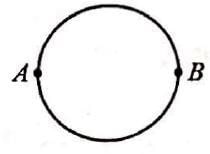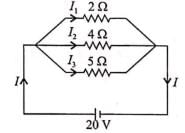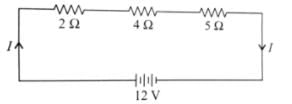Test: Combination of Resistors: Series & Parallel (NCERT) - NEET MCQ
20 Questions MCQ Test - Test: Combination of Resistors: Series & Parallel (NCERT)
In the series combination of two or more than two resistances
Match the Column I with Column II.


Combine three resistors 5Ω, 4.5Ω and 3Ω in such a way that the total resistance of this combination is maximum
The total resistance in the parallel combination of three resistances 9Ω, 7Ω and 5Ω
Equivalent resistance (in ohm) of the given network is
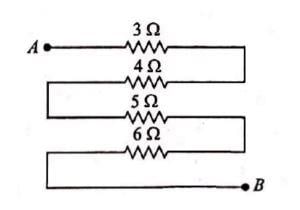
Which arrangement of 3Ω resistors will give a total resistance of 7Ω?
The equivalent resistance of series combination of four equal resistors is S. If they are joined in parallel, the total resistance is P. The relation between S and P is given by S = nP. Then the minimum possible value of n is
Five equal resistances of 10Ω are connected between A and B as shown in figure. The resultant resistance is

The correct combination of three resistances 1Ω, 2Ω and 3Ω to get equivalent resistance 11/5Ω is
Equivalent resistance of the given network between points A and B is

n resistors each of resistance R first combine to give maximum effective resistgance and then combine to give minimum. The ratio of the maximum resistance is
The equivalent resistance between A and B for . the circuit shown in this figure is
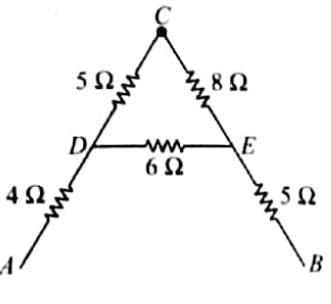
A copper cylindrical tube has inner radius a and outer radius b. The resistivity is ρ. The resistance of the cylinder between the two ends is
A wire of resistance 12 ohms per meter is bent to form a complete circle of radius 10cm. The resistance between its two diametrically opposite points, A and B as shown in the figure is

A and B are two points on a uniform ring of resistance 15Ω. The ∠AOB = 45∘. The equivalent resistance between A and B is
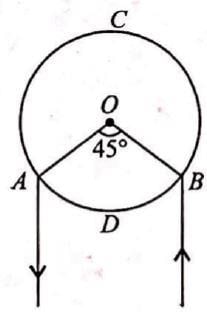
Two metal wires of identical dimensions are connected in series. If σ1 and σ2 are the conductivities of the metal wires respectively, the effective conductivity of the combination is
Three resistors 2 Ω, 4 Ω and 5 Ω are combined in parallel. This combination is connected to a battery of emf 20 V and negligible internal resistance, the total current drawn from the battery is
Three resistors of resistances 3Ω,4Ω and 5Ω are combined in parallel. This combination is connected to a battery of emf 12V and negligible internal resistance, current through each resistor in ampere is?
The reading of ammeter shown in figure is
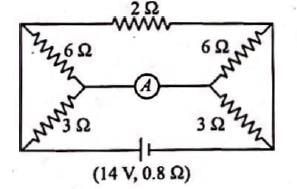
Three resistances 2Ω, 4Ω, 5Ω are combined in series and this combination is connected to a battery of 12 V emf and negligible internal resistance. The potential drop across these resistances are














 Similarly for second and third segment
Similarly for second and third segment









